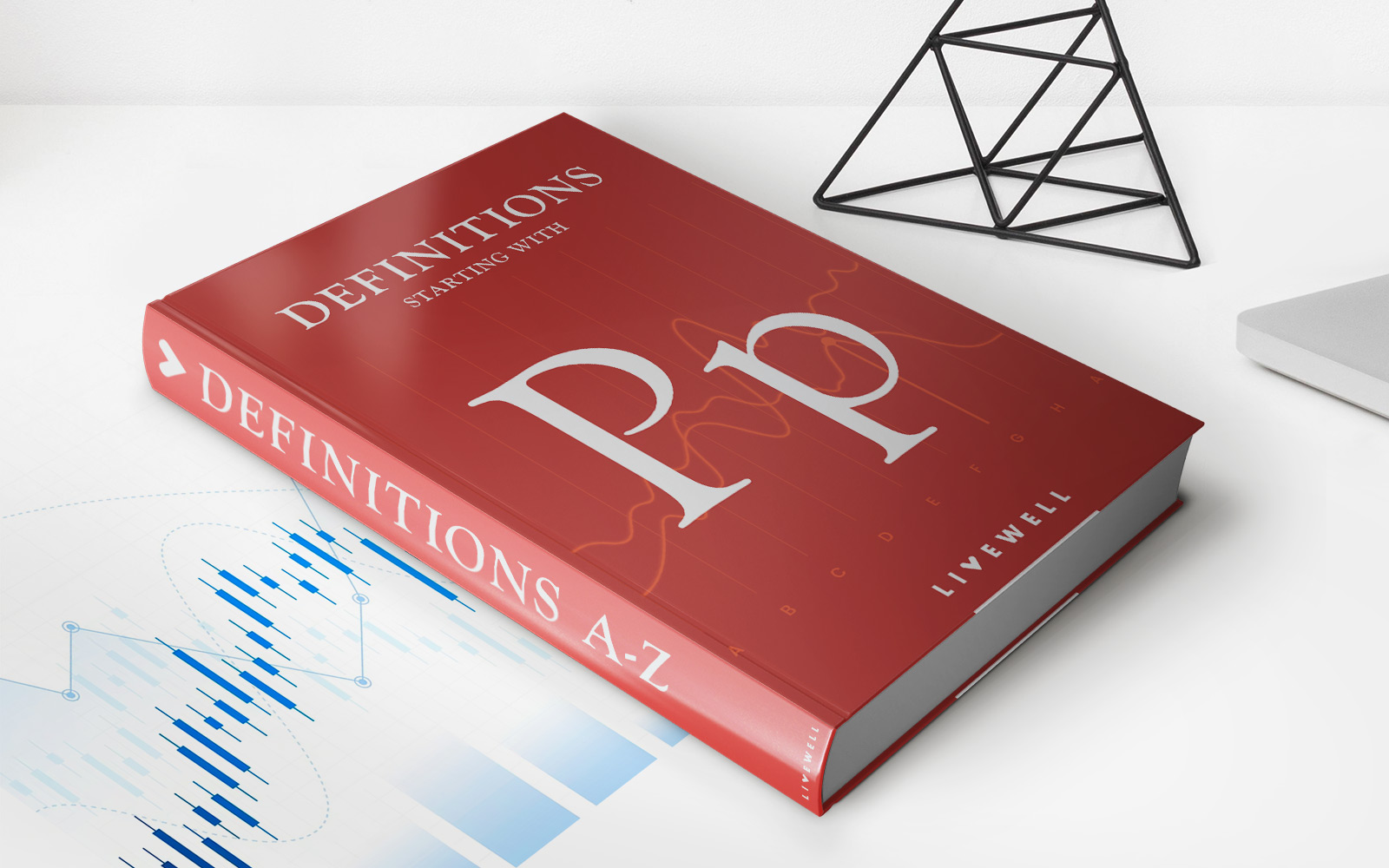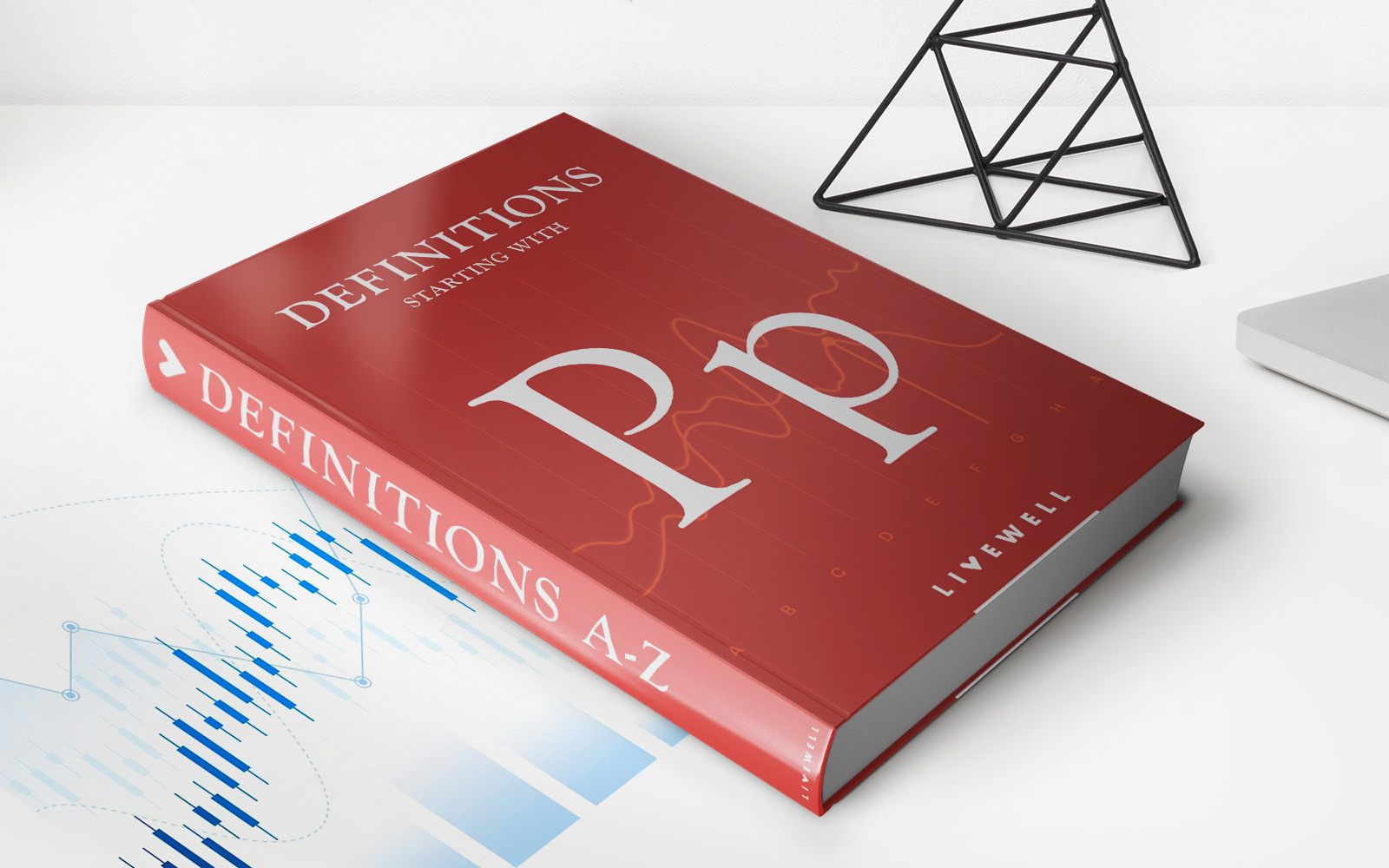

Finance
What Are Paid-Up Additions In Life Insurance?
Modified: February 21, 2024
Learn about paid-up additions in life insurance and how they can benefit your financial future. Discover how this finance strategy can help you build cash value and increase your policy's death benefit.
(Many of the links in this article redirect to a specific reviewed product. Your purchase of these products through affiliate links helps to generate commission for LiveWell, at no extra cost. Learn more)
Table of Contents
Introduction
Life insurance is an essential financial tool that provides protection and security for your loved ones in the event of your passing. It ensures that they are not burdened with financial liabilities and can maintain their standard of living. However, there are various types of life insurance policies available, each with its own features and benefits.
One such feature that can be added to a life insurance policy is the option of paid-up additions. Paid-up additions allow policyholders to enhance the cash value of their policy by purchasing additional insurance coverage, using the dividends earned from the policy. This additional coverage not only increases the death benefit but also accumulates cash value over time.
In this article, we will delve into the concept of paid-up additions in life insurance, exploring their benefits, how they work, and factors to consider before choosing this option.
Understanding paid-up additions and their potential advantages will empower you to make informed decisions when it comes to selecting the right life insurance policy for your needs. So, let’s dive in and explore the world of paid-up additions in life insurance.
Understanding Life Insurance
Before delving into the specifics of paid-up additions, it’s important to have a clear understanding of life insurance itself. Life insurance is a contract between an individual (the policyholder) and an insurance company. The policyholder pays regular premiums to the insurance company, and in return, the insurance company guarantees a sum of money to be paid out to the designated beneficiaries upon the death of the insured individual.
Life insurance serves as a financial safety net for your loved ones, offering them protection and financial assistance in the event of your passing. It provides peace of mind and can help cover various expenses, such as funeral costs, outstanding debts, income replacement, and future financial needs.
There are several types of life insurance policies available in the market, including term life insurance, whole life insurance, universal life insurance, and variable life insurance. Each type has its own unique features and benefits, catering to different financial goals and needs.
Term life insurance provides coverage for a set period, such as 10, 20, or 30 years. It offers a pure death benefit and does not accumulate cash value. On the other hand, whole life insurance is a permanent policy that provides coverage for the entire lifetime of the insured individual. It combines a death benefit with a cash value component, which grows over time and can be accessed or borrowed against.
Universal life insurance and variable life insurance are also permanent policies with a cash value component. Universal life insurance offers flexibility in terms of premiums and death benefit amounts, while variable life insurance allows policyholders to invest their cash value in various investment options, such as stocks and bonds.
Now that we have a basic understanding of life insurance, let’s explore the concept of paid-up additions and how they can enhance a life insurance policy.
What are Paid-Up Additions?
Paid-up additions are a valuable feature offered by some life insurance policies that allow policyholders to purchase additional coverage and increase the cash value of their policy. These additions are funded using the dividends earned from the original policy.
Dividends are a portion of the insurance company’s profits that are distributed to policyholders who have participating policies. These dividends can be used by the policyholder in several ways, one of which is purchasing paid-up additions.
When policyholders choose to purchase paid-up additions, they are essentially buying additional fully paid-up life insurance policies. These additions are considered “paid-up” because the policyholder does not need to make any further premium payments on them. They are separate policies with their own cash value and death benefit.
The main advantage of paid-up additions is that they provide the policyholder with an opportunity to accumulate more cash value within the policy. This cash value can be accessed through policy loans or withdrawals, providing the policyholder with financial flexibility and the ability to use the funds for various purposes, such as supplementing retirement income, paying for education expenses, or covering unexpected financial emergencies.
Furthermore, the additional coverage obtained through paid-up additions increases the death benefit of the policy. This means that in the event of the insured individual’s passing, the beneficiaries will receive a larger payout, providing them with even greater financial security.
It’s important to note that the decision to purchase paid-up additions is optional and is based on the policyholder’s preference and financial goals. Not all life insurance policies offer this feature, so it’s crucial to review the policy details and consult with a financial advisor or insurance professional to determine if paid-up additions are available and suitable for your needs.
Now that we understand what paid-up additions are, let’s explore the benefits they offer and how they work within a life insurance policy.
Benefits of Paid-Up Additions
Paid-up additions offer several benefits to policyholders, making them an attractive option for enhancing a life insurance policy. Here are some key advantages:
- Increased Cash Value: By purchasing paid-up additions, policyholders can significantly boost the cash value of their life insurance policy. This additional cash value grows over time, providing a valuable asset that can be accessed through policy loans or withdrawals. It can serve as a source of funds for various financial needs or even supplement retirement income.
- Enhanced Death Benefit: Paid-up additions also increase the death benefit of the policy. This means that in the unfortunate event of the insured individual’s passing, the beneficiaries will receive a larger payout. This can provide extra financial security and support to loved ones, helping to cover expenses such as funeral costs, outstanding debts, and ongoing living expenses.
- Compounding Growth: The cash value within a life insurance policy that includes paid-up additions has the potential to grow through compounding. As the cash value accumulates, it can earn interest or be invested, leading to further growth over time. This compounding effect can significantly enhance the policy’s overall value and provide a valuable asset for the policyholder.
- Flexibility: Paid-up additions offer flexibility and control over the accumulation of cash value within the policy. Policyholders have the option to take policy loans or make withdrawals against the cash value, providing financial flexibility to address various needs, such as unexpected expenses, education costs, or supplementing retirement income. The ability to access funds within the policy can be a valuable safety net during challenging times.
- Enhanced Policy Performance: By adding paid-up additions to a life insurance policy, the overall performance of the policy can be improved. The additional coverage and cash value growth provided by paid-up additions contribute to the policy’s overall value and effectiveness. This can provide peace of mind to the policyholder, knowing that their life insurance policy is working harder for their financial well-being.
It’s important to consider these benefits in the context of your specific financial goals and needs. While paid-up additions can be advantageous for many policyholders, it’s essential to review the details of your policy and consult with a financial advisor or insurance professional to determine if this feature aligns with your long-term financial plans.
Now that we understand the benefits of paid-up additions, let’s delve into how they work within a life insurance policy.
How Paid-Up Additions Work
Paid-up additions work by allowing policyholders to use the dividends earned from their life insurance policy to purchase additional fully paid-up life insurance coverage. These additions are separate policies with their own cash value and death benefit, and they enhance the overall value of the original policy.
When the dividends are allocated to the policyholder, they have the option to choose how they want to utilize them. By selecting paid-up additions, the policyholder can effectively reinvest their dividends back into the policy, increasing its cash value and death benefit.
Here’s a step-by-step breakdown of how paid-up additions work:
- Dividend Allocation: The insurance company allocates dividends to policyholders with participating policies based on the overall profitability of the company and the performance of the policies.
- Dividend Options: Policyholders have various options for utilizing their dividends, such as receiving them in cash, using them to reduce premiums, purchasing additional insurance coverage, or as a combination of these options.
- Purchasing Paid-Up Additions: If policyholders choose to purchase paid-up additions, the dividends are used to buy additional fully paid-up life insurance coverage. The amount of coverage obtained depends on the dividend amount and the policyholder’s age and health at the time of the purchase.
- Separate Policy: The paid-up additions become separate policies within the original life insurance policy. They have their own cash value and death benefit, which adds to the overall value and protection provided by the policy.
- Cash Value Accumulation: The cash value within the paid-up additions grows over time through earnings and potential interest or investment gains. This accumulation occurs on top of the cash value of the original policy. Policyholders can access this cash value through policy loans or withdrawals, providing financial flexibility when needed.
- Death Benefit Enhancement: The death benefit of the original policy is increased by the additional coverage provided by paid-up additions. In the event of the insured individual’s passing, the beneficiaries will receive a larger payout, ensuring greater financial support for their needs.
Paid-up additions offer policyholders the opportunity to enhance the overall value of their life insurance policy by utilizing dividends to purchase additional fully paid-up coverage. This feature provides financial flexibility, increased cash value, and an enhanced death benefit, making it a valuable addition to many life insurance policies.
Now that we understand how paid-up additions work, let’s explore some examples to illustrate their benefits and potential outcomes.
Examples of Paid-Up Additions
Let’s take a look at a couple of examples to better understand the potential benefits and outcomes of paid-up additions within a life insurance policy:
Example 1:
John is a 35-year-old individual who purchased a participating whole life insurance policy. The policy offers paid-up additions as an optional feature. Over the years, John diligently pays his premiums, and his policy accumulates dividends.
After conducting a financial review, John decides to utilize his accumulated dividends to purchase paid-up additions. He uses the dividends to buy an additional fully paid-up life insurance policy, which increases the overall cash value and death benefit of his original policy.
As time goes by, the cash value within the paid-up additions grows, thanks to earnings and potential interest or investment gains. This additional cash value provides John with flexibility and financial security.
In the unfortunate event of John’s passing, the beneficiaries of his policy will receive a larger death benefit, consisting of the original policy’s death benefit and the death benefit of the paid-up additions. This substantial payout can help the beneficiaries cover various expenses, including outstanding debts, funeral costs, and ongoing living expenses.
Example 2:
Emily is a 50-year-old individual who has been diligent about maintaining her participating whole life insurance policy. The policy offers paid-up additions as an optional feature.
Emily has accumulated a significant amount of dividends over the years. She decides to allocate those dividends towards purchasing paid-up additions, increasing the cash value and death benefit of her policy.
Throughout the years, the additional cash value within the paid-up additions grows, providing Emily with a valuable asset that she can access if needed. For example, Emily may choose to take a policy loan against the cash value to fund a home renovation project or supplement her retirement income.
In addition, the enhanced death benefit of Emily’s policy ensures that her beneficiaries will receive a larger payout in the event of her passing, providing them with financial security during a challenging time.
These examples highlight the potential benefits of paid-up additions within a life insurance policy, including increased cash value, enhanced death benefit, and financial flexibility. However, it’s important to note that the specific outcomes will depend on factors such as the policyholder’s age, health, and the performance of the underlying policy.
Now that we’ve examined some examples, let’s explore important factors to consider before choosing paid-up additions.
Factors to Consider Before Choosing Paid-Up Additions
While paid-up additions can offer significant benefits within a life insurance policy, it’s crucial to carefully consider several factors before deciding to include this feature. Here are some important considerations:
- Overall Financial Goals: Evaluate your long-term financial goals and how paid-up additions align with them. Consider whether you prioritize cash value growth, death benefit enhancement, or a combination of both. Understanding your objectives will help determine if paid-up additions are the right fit for your needs.
- Budget and Affordability: Assess your financial situation and ensure that you can comfortably afford the premiums associated with paid-up additions. While these additions can enhance the value of your policy, they also come with additional costs. Make sure that adding paid-up additions to your policy does not strain your budget.
- Dividend Performance: Paid-up additions are funded using dividends earned from the underlying life insurance policy. Research the historical dividend performance of the insurance company to gain insight into the potential growth and stability of the dividends over time. A strong dividend track record is indicative of the company’s financial strength.
- Policy Features and Flexibility: Review the terms and conditions of your life insurance policy to understand the flexibility offered for utilizing paid-up additions. Ensure that the policy allows for policy loans, withdrawals, and adjustments to the paid-up additions to accommodate your changing financial needs.
- Future Premiums: Consider the impact of adding paid-up additions on your future premium payments. While the paid-up additions themselves do not require further premiums, the overall premium amount for the entire policy may increase due to the larger death benefit and enhanced cash value. Make sure you can comfortably afford the premiums both currently and in the future.
- Professional Guidance: Seek the advice of a financial advisor or insurance professional who specializes in life insurance. They can provide personalized recommendations based on your specific financial situation, goals, and risk tolerance. They will help you evaluate whether paid-up additions make sense for your overall financial strategy.
Taking these factors into account will help you make an informed decision about whether to include paid-up additions within your life insurance policy. It’s essential to remember that what works for one individual may not necessarily work for another, as financial circumstances and goals can vary significantly.
By carefully considering these factors and seeking professional guidance, you can determine if paid-up additions align with your long-term financial plans and provide the added benefits you seek in a life insurance policy.
Now, let’s summarize the key points we’ve covered regarding paid-up additions in life insurance.
Conclusion
Paid-up additions offer a valuable opportunity to enhance the cash value and death benefit of a life insurance policy. By utilizing the dividends earned from the policy, policyholders can purchase additional fully paid-up coverage, providing increased financial security and flexibility.
Through the accumulation of cash value and the enhancement of the death benefit, paid-up additions offer several benefits, including potential growth, compounding, and the ability to access funds when needed. These additional features make paid-up additions an attractive option for those seeking to maximize the value of their life insurance policy.
However, it is crucial to carefully consider various factors before choosing paid-up additions. Evaluating your overall financial goals, affordability, dividend performance, policy flexibility, future premiums, and seeking professional advice will help ensure that paid-up additions align with your specific needs and circumstances.
Remember that life insurance is a long-term commitment, and the decision to include paid-up additions should be made with careful consideration and understanding of the potential outcomes. By taking the time to assess your financial objectives and consult with experts, you can make an informed decision that aligns with your overall financial strategy.
Ultimately, paid-up additions can provide policyholders with enhanced benefits, increased cash value, and improved financial security. They offer a valuable opportunity to make the most of your life insurance policy and provide additional value to you and your loved ones.
Now that you have a better understanding of paid-up additions, take the time to review your life insurance policy, assess your financial goals, and consider whether this option is the right choice for you.
Remember, it’s essential to regularly review your life insurance needs and consult with professionals to ensure that your policy continues to meet your evolving financial goals.














